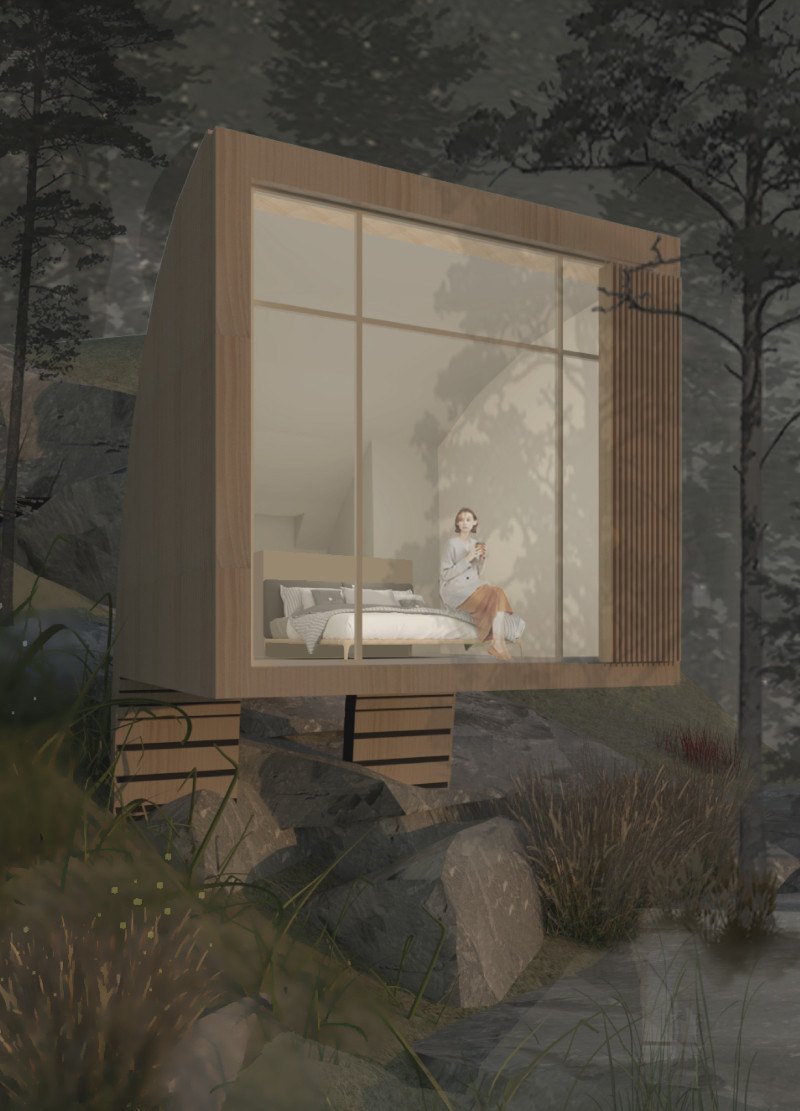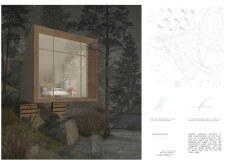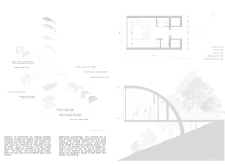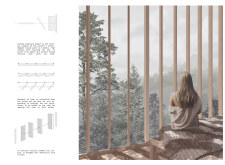5 key facts about this project
"Pendant in Time" is located in the peaceful area of Vale De Moses. It serves as a retreat, focused on helping occupants connect deeply with nature. The design concept aims to frame moments of beauty, especially sunrises and sunsets, allowing residents to experience the changing scenery through thoughtfully placed openings.
Spatial Organization
The layout is simple yet functional, prioritizing areas for sleeping, storage, and hygiene. At the center is a two-sided bed that faces a tall window. This arrangement invites plenty of natural light while offering wide views of the surrounding landscape. It brings nature into the living space, making it a part of everyday life.
Structural Considerations
The form of the structure is round, which adds to its visual interest and stability. It supports a sleeping pod that seems to float above the ground, increasing the feeling of being part of the landscape. The design includes three pressure points, ensuring the building remains stable while preserving the natural shape of the hillside. A walkway merges gently with the terrain, enhancing the connection between the structure and its environment.
Sustainability and Materiality
Sustainable practices play an important role in the design. A rain-collecting system is integrated into the facade. This system captures rainwater and directs it to a tank at the base of the building. The materials used include capital pine wood, which is chosen for its durability and compatibility with the natural surroundings.
Orientation and Facade Design
Vertical design elements feature adjustable slatted facades, allowing control over light and privacy. The tallest point inside reaches four meters, creating an open and airy feel that echoes the nearby mountains. This thoughtful approach encourages a close relationship with the landscape while contributing to the overall functionality of the living space.
The tall window stands out as a crucial feature, framing the scenic views outside. It draws in natural light and allows occupants to experience the beauty of nature in a direct way.






















































